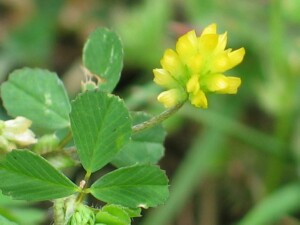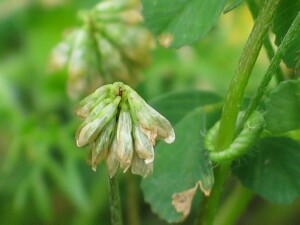Suckling Clover
Back | Salinity Indicator Plants Home | Common name home | Scientific name home | Photo Gallery | Glossary
| Suckling Clover photos | Family: Pea (Fabaceae syn. Papillionaceae) |
| Scientific Name: | Trifolium dubium | 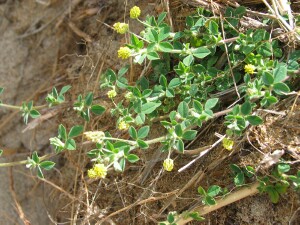 Suckling Clover plant Photo: A J Brown | |||||
Status: | Native to Europe and the Middle East. | ||||||
Plant Description: | Annual herb with prostrate or ascending habit. Stems 5-40 cm long, branching and sparsely hairy. Leaves are trifoliate with obovate leaflets, 4-13 mm long and 4-8 mm wide, virtually hairless, finely toothed. Stipules (leaf-like structures at the base of the leaf and flower-stalks) leafy and fused at the base of the flower-stalk. Flowers yellow, 3-20 flowered, in hemispherical heads, 6-7 mm long and 8-9 mm wide. | ||||||
Habitat: | Widespread and common weed of pastures and waste areas across Victoria. Typically a plant of fresh-water habitats but may occur on the fringes of saline swamps and flats during wetter periods.
| ||||||
Comments: | One of a number of small annual clovers found in pastures, waste ground and bordering swamps, lakes and water courses. A simple key to the more common of these species is provided (Key to common annual clovers). Other clovers, but with a perennial habit, include Strawberry Clover (Trifolium fragiferum, White Clover (Trifolium repens) and Red Clover (Trifolium pratense). | ||||||
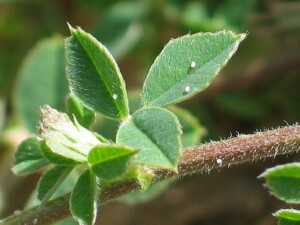 Leaves and stems of Suckling Clover Photo: A J Brown | 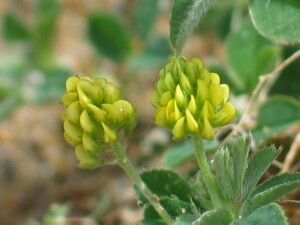 Flowers of Suckling Clover Photo: A J Brown |
|
|

